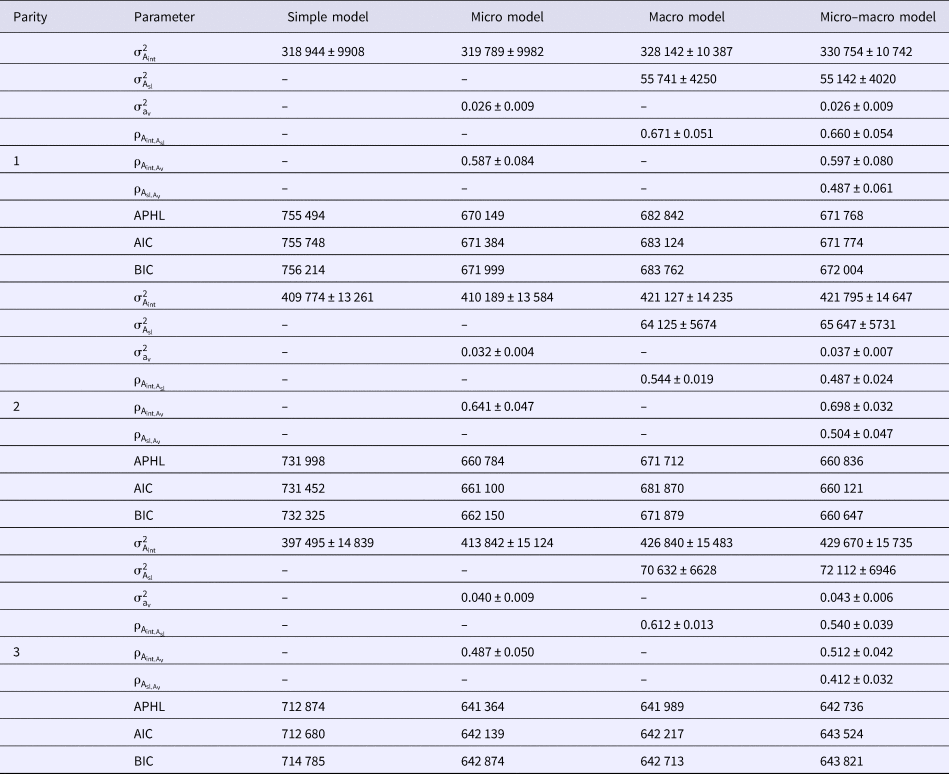
These BLUPs, which are the general combining ability (GCA), or 1/2 of the breeding value (BV, with BV = 2 ×× GCA) of each parent, are then used to select the best parents for future crosses or operational deployment. The progeny are later evaluated in a field experiment, and this information is used to assess the genetic worth of the parents by fitting parental linear mixed models (LMMs) and obtaining best linear unbiased predictions (BLUPs). The course requires all participants bring their own laptops.Most breeding programs plan several controlled crosses between outstanding parents to detect favorable alleles in their offspring. Lee, Rönnegård & Noh (2017) Data analysis using hierarchical generalized linear models with R. Professor Lee collaborated with John Nelder for several years in the UK. He is an experienced teacher used to giving courses in English. He has developed R packages, dhglm, mdhglm, jointdhglm and frailty.HL to fit various models in HGLMs.
#Dhglm asreml r software#
His research interests are extension, application and software development for GLM class of models, including joint GLMs, hierarchical GLMs (HGLMs), double HGLMs etc. Youngjo Lee is a professor of statistics at Seoul National University, Korea. He has a twenty-year teaching experience both at undergraduate and graduate level with a majority of the courses given in English. His research interests covers applications in genetics and ecology including spatial modelling. Lars Rönnegård is a professor of statistics at Dalarna University, Sweden, and guest researcher the Swedish University of Agricultural Sciences.

A summary of this analysis is available here for interested participants to have a look at.Īfter completing the course the participants will gained knowledge on: an algorithm for fitting hierarchical generalized linear models, likelihood inference for random effects and variance components, and available model checking tools for hierarchical generalized linear models.Īfter completing the course the participants will be able to analyze non-Gaussian data using dispersion modelling with the hglm and dhglm packages in R.Īfter completing the course the participants will gain insights into the extended likelihood principle and ongoing developments within the field of hierarchical likelihood inference.
#Dhglm asreml r crack#
The afternoon session exercise includes analysis of the crack growth data using the hglm and dhglm packages. Working with model checking plots for generalized linear models and HGLMs.Įxtended likelihood principle and inference for random effects using the h-likelihood.įurther possibilities using the h-likelihood.Īnalysis of crack growth data using the hglm and dhglm packages.Ĭomparison to other packages to fit mixed models in R. Motivating examples and overview of R packages to be used.Īlgorithm to fit hierarchical generalized linear models (HGLMs).Īnalyses of the epileptic seizure count using the hglm package in R. This is a full-day course introducing the participants to the book by Lee, Rönnegård & Noh (2017). It is an advantage if the participants have experience of working with: maximum likelihood estimation, generalized linear models, and linear mixed models or other multilevel models. The participants should be well acquainted with R. The course level is suitable for first-year graduate students and young researchers in applied statistics. The core part of the course includes exercises using the hglm and dhglm packages in R developed by the course instructors. The course covers topics such as generalized linear models with random effects, heteroscedasticity and dispersion modelling, modelling of multivariate outcomes and further likelihood-based methods. The course is well suited for IBC2020 and includes a combination of lectures and hands-on exercises in R. Lee, Rönnegård & Noh published the book “Data analysis using hierarchical generalized linear models with R” in 2017 that has been used on several courses already. Here hierarchical generalized linear models can be applied, which is a broad class of models that can be fitted using a deterministic likelihood-based optimization algorithm. Furthermore, non-Gaussian outcomes need to be handled to be able to perform adequate inference in real life problems.

Data can for instance be correlated either because we have repeated measurements on individual subjects, there are genetically related individuals or data have been sampled spatially. Hypothesis testing and prediction in various modern applications can be rather complex because they often require modelling of correlated responses. Sunday, 5 July 2020 | 9:00 - 17:00 | Location: TBDĬomplex problems do not always require complex tools, and searching for these simple solutions is what makes science really exciting.


 0 kommentar(er)
0 kommentar(er)
